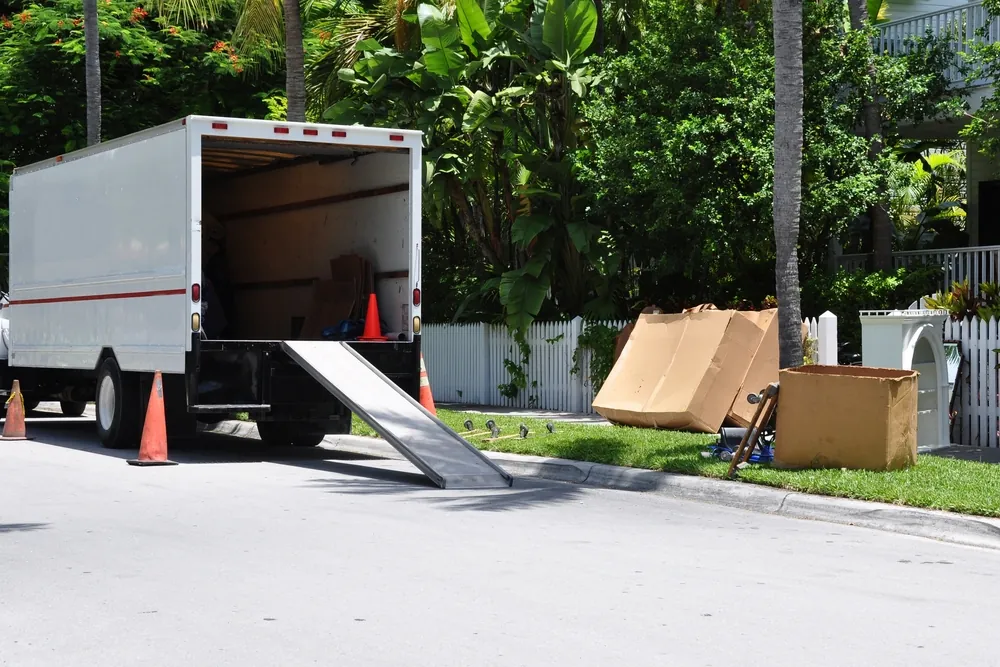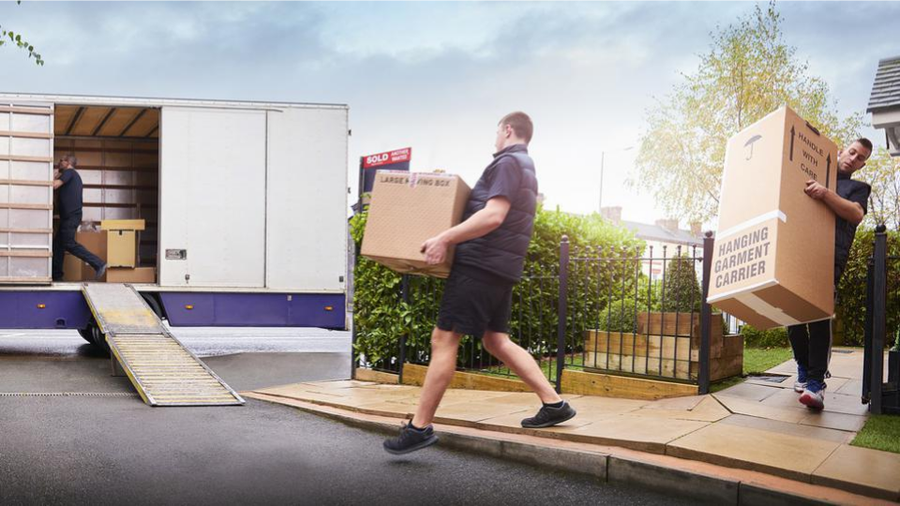Factors Influencing Moving Costs
Understanding the costs associated with moving a one-bedroom apartment involves several variables. These factors can significantly impact your budget, and knowing them helps you plan effectively.
Distance
The distance of your move plays a crucial role in determining the overall cost. Whether you’re moving locally or across the country, this factor will have a significant influence.
Local Moves (Under 100 Miles)
For moves within this range, costs typically span from $400 to $1,600. These prices generally include basic transportation and labor but can vary based on additional services like packing or access issues.
Long-Distance Moves (Over 100 Miles)
When moving beyond 100 miles, expenses can climb dramatically, ranging from $700 to $3,000. The increased mileage rates contribute heavily to these costs. For instance, a move covering 250 miles might cost between $700 and $2,500. Extending that distance to 1,000 miles could increase the expense further, reaching anywhere from $1,400 to $3,500. It’s essential to consider hiring professional long-distance movers for such relocations to ensure a secure and reliable process.
Key Considerations:
- Mileage Rates: Long-distance moves are often calculated based on mileage rates. The farther you need to go, the more you pay.
- Fuel Charges: Increases in distance also mean higher fuel costs. Be sure to inquire if these charges are included in your initial quote.
- Tolls and Permits: Depending on your route, additional fees for tolls or permits may apply.
Choosing between local and long-distance movers requires careful consideration of these elements. Understanding how distance affects pricing enables you to make informed decisions about your move.
By considering these aspects of distance-related costs, you can develop a clearer picture of what to expect when planning your move. Keep these insights in mind as you evaluate different moving options and gather quotes from potential service providers. If you’re unsure about the best locations for your move or need assistance with storage solutions during a long-distance relocation, exploring various locations serviced by professional movers might provide some valuable insights.
Labor Costs
Labor costs play a critical role in determining the expenses of moving a one-bedroom apartment. Movers typically charge between $25 and $50 per hour depending on the location and company. This rate includes the cost of the professional labor needed to pack, load, transport, and unload your belongings.
For a standard move, you might expect:
- Local Moves: In proximity, such moves may require approximately 2 to 4 hours of labor. Thus, total labor charges could range from $200 to $400, assuming two movers are working at an average rate.
- Long-Distance Moves: The time commitment increases significantly with distance. Labor costs here can vary widely based on additional factors like mileage rates and access fees.
Hiring professionals ensures efficiency and safety during your move but comes at a price. Balancing these costs against your budget is crucial for planning effectively.
While labor is a substantial part of moving expenses, other elements such as distance and weight of the shipment also contribute significantly to overall costs. One way to manage these costs is by considering utilizing a storage unit, which can provide numerous benefits including transforming your living or working space and potentially reducing moving expenses by allowing for a more manageable packing process.
Weight of Shipment
The weight of your belongings is an important factor in determining the costs involved in moving a one-bedroom apartment. On average, such an apartment typically weighs between 1,800 and 3,500 pounds. Knowing the weight of your items is crucial because it directly affects transportation fees.
- Transportation Costs
Moving companies usually calculate their charges based on weight. Heavier loads require more fuel and effort during transit, which increases the overall cost. For long-distance moves, the expenses are mainly determined by both the mileage rates and the shipment weight.
- Distance Factor
When comparing local moves to long-distance moves, distance becomes an important factor along with weight. Heavier shipments will have a greater cost impact on longer distances due to higher mileage rates.
- Efficiency in Packing
By decluttering and reducing the weight of your shipment, you can save a significant amount of money. Lighter loads mean lower labor costs and potentially avoiding extra fees for handling large or numerous items.
It’s essential to consider the weight of your belongings when planning your move since it is connected to other important factors like distance and labor costs.
Access Fees
Access fees are additional charges that movers may apply when there are complications in accessing your apartment. These fees can arise from various factors such as:
- Stairs: If your apartment is located on an upper floor without elevator access, movers might charge extra for the physical effort required to move items up or down the stairs.
- Long Hallways: Long distances between your apartment and the moving truck can also incur additional costs. This is due to the increased time and labor needed to transport items over greater distances within the building.
- Narrow Doorways or Tight Corners: Situations where furniture must be disassembled or maneuvered through tight spaces can lead to extra charges.
These access complications contribute significantly to overall moving expenses. An understanding of potential access issues can help you anticipate these costs, ensuring a smoother moving process whether you’re undertaking local moves or long-distance moves. By considering these factors, you can better manage your budget and avoid unexpected expenses during your move.
Additional Services Impacting Costs
When planning to move a one-bedroom apartment, packing services often become a significant factor in the overall moving expenses. Professional packing services, such as those offered by Village Movers, can alleviate the stress of boxing up your belongings, but they come at a price.
Packing Service Options:
- Full-Service Packing: Movers handle all aspects of packing, from wrapping fragile items to boxing up everyday essentials. This service ensures that items are packed securely and efficiently.
- Partial Packing: Suitable for those who wish to pack some items themselves but need professional assistance for specific belongings, like delicate or valuable items.
- Unpacking Services: After relocation, unpacking services can be availed to help organize your new home swiftly.
Cost Range for Packing Services:
The cost for packing services when moving a one-bedroom apartment generally ranges from $600 to $1,600. Factors influencing these costs include:
- Volume of Items: More belongings mean more packing materials and time.
- Type of Items: Fragile or specialty items may require special care and materials. For instance, if you have a refrigerator or a TV that needs moving, you might want to consider specialized services like refrigerator moving or TV moving.
- Service Level: The choice between full-service and partial packing influences the expense.
Choosing professional packing can save time and reduce the risk of damage during transit. However, understanding these costs can help you decide if the convenience justifies the added expense.
It’s also important to consider the potential hidden costs of DIY moving, which can sometimes surpass the expenses associated with hiring professionals.
Seasonal Variations in Moving Costs
Understanding how seasons impact moving costs can greatly influence your budget planning. The peak moving season typically spans from April to September, a period when demand for moving services surges. This increased demand often translates to higher prices, as moving companies experience their busiest time of the year.
During these months, you might find that:
- Availability of Movers: Movers are in high demand, and booking slots fill up quickly. It’s advisable to schedule your move well in advance if you plan to relocate during this time.
- Price Surge: Expect to pay premium rates due to the heightened demand. This can affect everything from basic moving fees to additional services like packing and storage.
On the other hand, opting for a move during the off-peak seasons—the colder months from October through March—can lead to significant savings:
- Off-Peak Discounts: Many companies offer discounts or promotional rates during these slower months. This can be an excellent opportunity for cost-effective relocation.
- Flexible Scheduling: There is often more flexibility in scheduling, allowing you to choose a date that best fits your timeline without worrying about limited availability.
Being strategic about your moving date by considering these seasonal variations can help optimize your expenses and ensure a smoother transition into your new home.
If you’re planning a residential move during these times, it’s essential to consider the type of items you’ll be relocating. For instance, if you have large furniture pieces that need moving, such as sofas or beds, furniture moving services could be beneficial.
Additionally, should you possess a piano or organ that requires relocation, employing specialized piano moving services will ensure its safe transport.
For seniors who may be transitioning into new living arrangements during this period, utilizing senior moving services can provide the necessary assistance and make the process less stressful.
Cost-Saving Tips for Moving a One-Bedroom Apartment
Cutting down on moving expenses starts with decluttering, a crucial step that reduces both the volume of your belongings and the associated costs. By minimizing what you need to pack and transport, you not only save on packing materials but also on labor and transportation fees. Here are some practical decluttering tips:
- Sort and Categorize: Go room by room, creating piles of items to keep, donate, or discard.
- Sell Unwanted Items: Consider hosting a garage sale or using online platforms to sell items you no longer need.
- Donate: Many organizations are happy to accept gently used furniture, clothes, and household items.
The decision between self-packing and hiring professional packers also influences your moving budget. Choosing to pack your belongings yourself can lead to substantial savings. Here’s why:
- Cost Efficiency: Professional packing services can add $600 to $1,600 to your moving expenses. By packing yourself, this cost is eliminated.
- Control Over Packing Process: You decide how each item is packed and organized, which can streamline unpacking in your new home.
On the other hand, if time is limited or you have fragile valuables, hiring professionals may be worth the investment for peace of mind. For instance, if you’re moving a hot tub as part of your relocation, it’s advisable to seek expert help. You might find this guide useful for understanding what to consider when hiring hot tub movers. Balancing these strategies effectively can result in significant cost reductions for your move.
Conclusion on Budgeting for a One-Bedroom Apartment Move
Understanding the summary of costs involved in moving a one-bedroom apartment helps you prepare effectively. By considering factors like distance, labor, shipment weight, and additional services, you ensure that your budget aligns with actual expenses.
Addressing the question, How Much Does It Cost to Move a One-Bedroom Apartment? A Comprehensive Guide, reveals that costs can vary widely from $400 for local moves to $3,500 for long-distance relocations. Preparing ahead by factoring in potential access fees and peak season charges equips you with the foresight needed for a successful move.
Taking time to plan reduces unexpected expenses. Request multiple quotes, consider self-packing options, and schedule your move during less busy periods. This proactive approach not only saves money but also minimizes stress during your relocation journey.
If you’re also considering small business moving or retail stores moving, it’s crucial to factor in the unique costs associated with these types of relocations. Similarly, if you’re involved in an educational institution moving or restaurant moving, understanding the specific requirements and potential costs can significantly aid in planning and budgeting for these moves.







